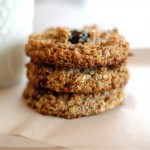
It’s that time of year again – Spring is in the air! This means melting snow, the school year’s home stretch and the return of Nova Scotia’s migrating birds. There is no better way to welcome back the birds than to put out birdfeeders.
There are hundreds of birdfeeder designs at local stores in your area, but birdfeeders can also be made at home from old yogurt and ice cream containers, empty pop bottles, mesh bags, tea cups, PVC pipe and pretty much anything else that you might have lying around! For this reason, we’ll leave the design up to you and your family, and focus on what and when to feed the birds.

Now is the time to start. Birds decide where the best food spots are as soon as they arrive. Having food out early will increase your chances of being the favourite place to eat.
Birds have evolved to prefer different types of food. I suggest making two or three feeders of different types, and keeping a journal to see which types of birds like which kinds of foods! Stores sell huge bags of wild birdseed mix, which is a great start, particularly for birds like finches and grosbeaks. Suet (animal fat – often lard or kitchen leftovers), sometimes with seeds mixed or rolled into it, is perfect for birds that prefer insects – like woodpeckers and nuthatches . Chickadees like both! And for hummingbirds which usually eat nectar from flowers, we recommend a brightly-coloured red feeder that gives them sugary syrup (1 C of sugar in 4 C of boiling water) to start with in the spring and then during growing season, plant some red flowers like impatiens, salvia or bee balm to attract them.

Keep your feeders full, and make sure to clean a hummingbird feeder every couple of days with vinegar, otherwise it will grow mould.
When placing feeders, try to keep a metre of open space around them so birds can be wary of predators (neighbourhood cats), and consider whether you want to attract squirrels. If not, try to place a metal pie plate or plastic cone approximately one metre from the ground around your feeder support (or a bit closer above the feeder, if it hangs) as this will impede squirrels from climbing to the food. This is a good time of year to put out swept-up pet hair, old feathers and bits of scrap cloth. Birds will use these to make nests, and will be more likely to stay nearby.

And speaking of nesting- if you’re looking for a summer camp home for your children – the Discovery Centre has the perfect solution for you! Our week-long summer camps run from July through the end of August, and are open to children from 6-12. We guarantee a scientific blast – but beware – they fill up early!
For more great things to discover – visit the Discovery Centre on Barrington Street in Halifax, check out their website or join them on facebook.
Source: http://feedproxy.google.com/~r/hrmparent/CLkz/~3/0CY3VVhKwns/


